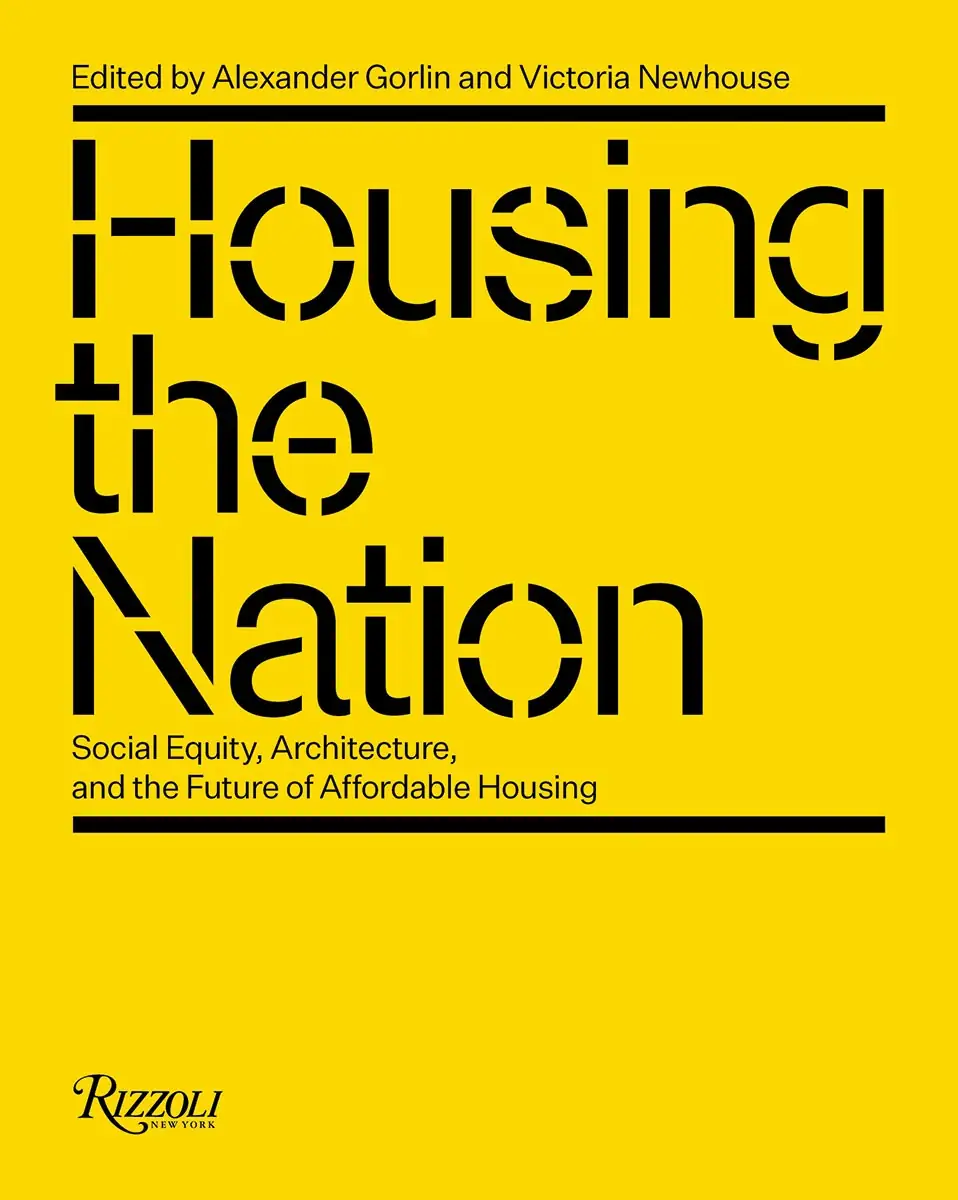
Housing the Nation: Social Equity, Architecture, and the Future of Affordable Housing, edited by Alexander Gorlin and Victoria Newhouse. Rizzoli, 240 pages, $35.
Scholars, advocates, economists, architects, and planners take stock of America’s affordable-housing crisis and suggest various strategies to rectify it in this forthcoming volume assembled by architect Alexander Gorlin and historian Victoria Newhouse. Divided into five thematic sections, the book ends with a portfolio of notable affordable-housing projects by equally notable designers. Following are excerpts from the editors’ introduction and “Wheel Estate,” an essay by contributor Andrés Duany.
As of December 2022, more than 40 percent of the U.S. population was considered rent burdened, that is, spending more than 30 percent of income on rent. Rents have doubled and tripled in cities such as Miami and Nashville, areas that until recently have been affordable places to live. Homelessness, the most dire result of the affordability crisis, has become more prevalent in many cities, such as Austin, Texas, and Portland, Oregon. This disruption to the housing market gives rise to social dislocation, pain, and economic instability in people who cannot afford to live reasonably close to their jobs. Simply put, there is not enough affordable housing either existing, under construction, or planned for the future, and what is under construction is not built fast enough to make a dent in the enormous demand.
The insufficiency of affordable housing, combined with long-standing income inequality coinciding with race, means that this wealthy country, built on principles of equality and fundamental rights, has become unjust and dysfunctional. A nation that denies fair housing to its people, especially its people of color, is on the road to a breakdown. This calamitous state of affairs was our catalyst for creation of this book.
What distinguishes Housing the Nation from other volumes is its holistic, clear-sighted, pragmatic view of the affordable-housing crisis in the United States. The collected essays analyze the complex root causes of the present situation; explore various perspectives on the issue; and propose potential solutions. The writers—expert economists, community organizers, housing advocates, land-use lawyers, government officials, architects, planners, thinkers, and academics—are actively engaged in the many aspects of building affordable housing.
Wheel Estate
Until the Great Depression, the United States had enough housing for tens of millions of poor Americans and immigrants. Much of this housing was considered substandard, and, in 1937, the U.S. Housing Act sought to improve accommodation for the poor through public-housing subsidies. These programs raised standards but provided—and continue to provide—housing for only a small minority of those in need. According to the National Low-Income Housing Coalition, such programs supply only 36 affordable units for every 100 low-income families. Another, larger gap exists for those with incomes too high for subsidized rent and too low for conventional homeownership.
In the mid- to late 1920s, a new industry emerged to fill the affordability gap: prefabricated and inexpensive factory-made housing. Its genesis was the touring trailer, which glamorized automobile luxury camping. With the onset of the Great Depression, workers followed job opportunities around the country, moving via homemade trailers that evoked the days of covered wagons. The trailer parks that once received upper-middle-class campers became home to less well-off, itinerant laborers. Manufacturers responded by first designing small portable houses and then larger ones more suitable for long-term living. The mobile home industry gradually became one of the fastest-growing sectors in America.
By the 1940s, mobile homes were large enough to house entire families, and ad hoc “trailer park” communities sprouted in open fields across every state. By the 1950s, the trailers had evolved from temporary to permanent use. The industry began to specify axles suitable for only a single transfer. Once the mobile homes were shipped from the factory to the lot, the wheels would be removed, and the trailer would become a permanent fixture.
Mobile homes continued to add size and amenities during the 1950s through the 1970s. At the time, site-built homes were selling for $40,000, and three-bedroom trailers were available for $6,000. By the 1970s, factory-made homes supplied 37 percent of the nation’s housing, and the industry had transitioned from an unregulated business with a reputation for shoddy products to a federally chartered industry with a uniform code and strict quality control. As part of this transition, for reasons of marketing and regulatory distinction, the “mobile home” moniker was abandoned in favor of “manufactured housing.” The name change did little to shift the perception of factory-made housing as substandard. A get-what-you-pay-for mentality hamstrings an industry that still overdelivers in a price-to-value ratio.
Today, a three-bedroom, federally regulated, new-from-the-factory manufactured home costs about $85 a square foot. The site-built version of the same three-bedroom house would run $250 per square foot, if not more. Yet cultural contempt—a problem that can be addressed with design—remains a significant hurdle to the industry.





Post a comment to this article
Report Abusive Comment